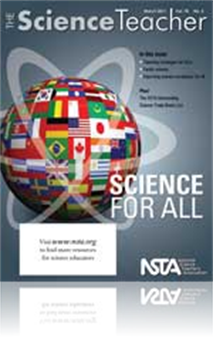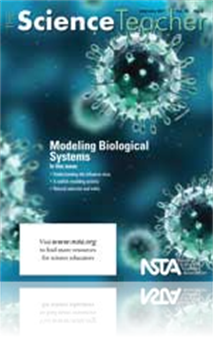All The Science Teacher resources
Journal Article
Career of the Month: An Interview With Horticulturist John Stier
Horticulture—the science and art of cultivating plants—is host to a dynamic array of careers. Horticulturist John Stier researches turfgrass to develop high-quality sports fields. At the 1994 World Cup, he watched the U.S. men's team play on the ...
Journal Article
Science 2.0: Personalizing the PC for Accessibility
Personalizing the PC for Accessibility. Students with disabilities need access to computers in the classroom—but this goes beyond the mere availability of a machine. This month's column describes some of the Apple and Microsoft computer features th...
Journal Article
In their research, scientists generate, test, and modify scientific models. These models can be shared with others and demonstrate a scientist’s understanding of how the natural world works. Similarly, students can generate and modify models to gai...
Journal Article
It’s that time of year again, when avoiding the flu is on everyone’s mind. As we brace ourselves for possible flu outbreaks, the need to understand biological issues related to this virus becomes clear. Through modeling, the lesson presented in t...
Journal Article
Career of the Month: An Interview With Yoga Therapist J. J. Gormley-Etchells
In recent years, many individuals have looked to yoga to improve their well-being and many health care practitioners have encouraged it to complement healing. Recent studies demonstrate the beneficial effects of yoga for health (Chacko et al. 2005; C...
Journal Article
Science 2.0: “Flipping” Your Classroom
Aaron Sams and Jonathan Bergmann’s flipped classroom model allows them to provide direct instruction, but not during class. Students watch online lectures at night and teachers spend class time connecting individually with students—through hands-...
Journal Article
Editor’s Corner: Model Biology
Models are at the core of the scientific enterprise. They help us make predictions, understand complex systems, generate new ideas, and visualize both the very large and the very small. The generation of models is the creative engine that drives scie...



